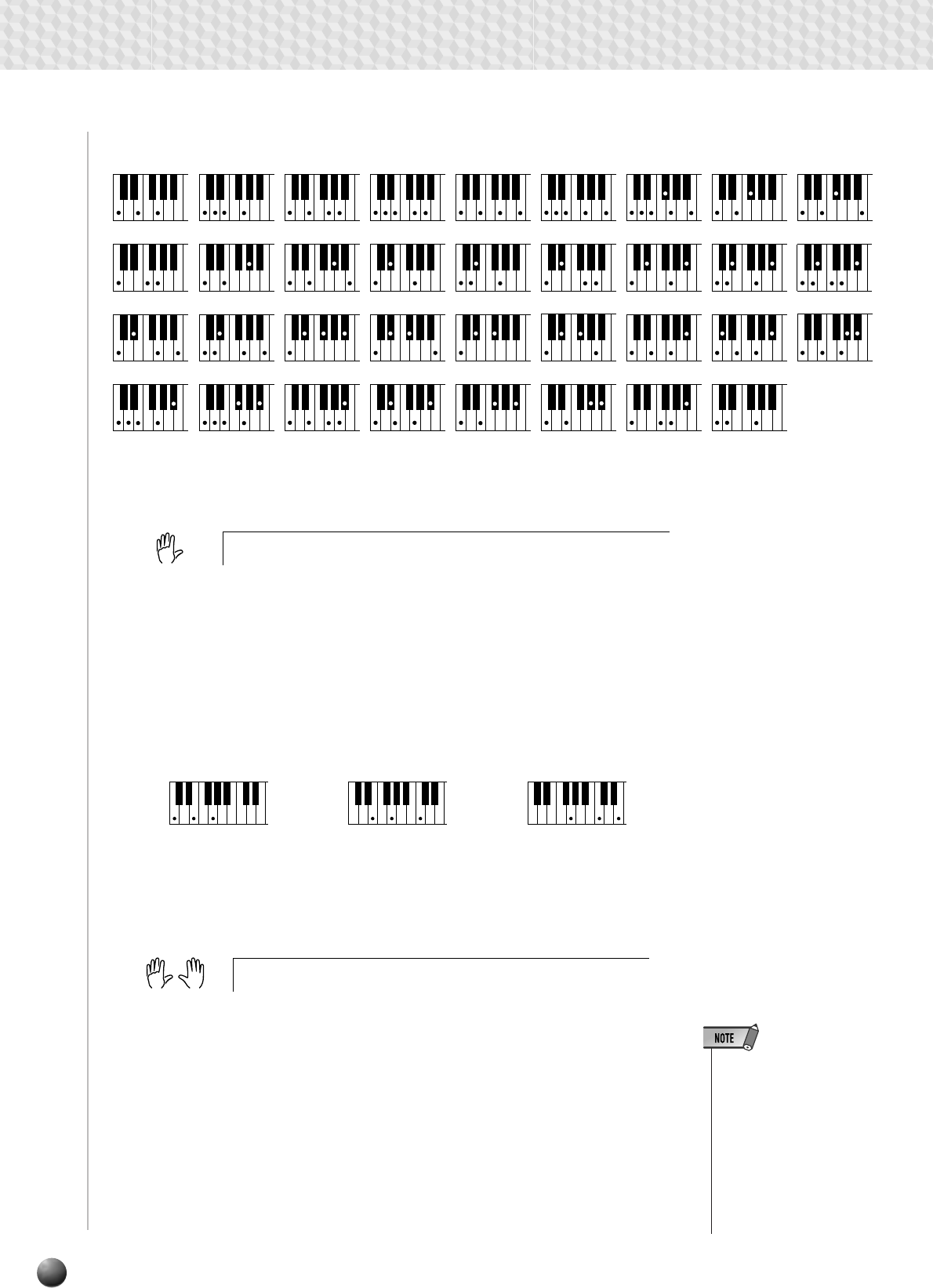
34
C
Cm
7
C
( )
CM
( )
7
C
(9)
C
( )
(9)
6
Caug
Cm
6
Cm
7
( )
Cm
b5
7
CmM
b5
7
Cm
( )
(9)
7
Cm
(9)
CmM
7
( )
CmM
(9)
7
( )
Cdim
Cdim
7
C
(9)
7
( )
C
(13)
7
( )
C
(b9)
7
( )
C
(b13)
7
Csus
4
C
1+2+5
C
b5
7
C
6
( )
( )
CM
7
(9)
7
CM
(#11)
( )
7
CM
b5
C
(b5)
( )
C
(
#11)
7
C
(#9)
7
( )
C aug
7
Cm
7
(11)
( )
( )
CM aug
7
( )
C sus
4
7
( )
● The FINGERED 2 Mode
This is essentially the same as the FINGERED 1 mode, described above, except
that the FINGERED 2 mode additionally allows you to specify the lowest note
of each chord — simply, the lowest note played in the AUTO ACCOMPANI-
MENT section of the keyboard is used as the accompaniment bass note. This
means you can specify “on-bass” chords in which the main bass note for the
chord is not the root of the chord. For a C major chord, for example, you could
use E (the third) or G (the fifth) as the bass note rather than C.
C C on E C on G
Example for “C” chords
● The FULL KEYBOARD Mode (Full Key)
When the FULL KEYBOARD Mode is selected, the PSR-730/630 will auto-
matically create appropriate accompaniment while you play just about anything
using both hands, anywhere on the keyboard. You do not have to worry about
specifying the accompaniment chords. The name of the detected chord will
appear in the display.
• When the FULL KEY-
BOARD mode is se-
lected, the split point set-
ting (see page 30) for the
auto accompaniment will
be ignored.
• Chord detection occurs
at approximately 8th-note
intervals. Extremely short
chords — less than an
8th note in length — may
not be detected.
gered 2de: FinFingerMo
l Keyde: FulFingerMo
Auto Accompaniment


















